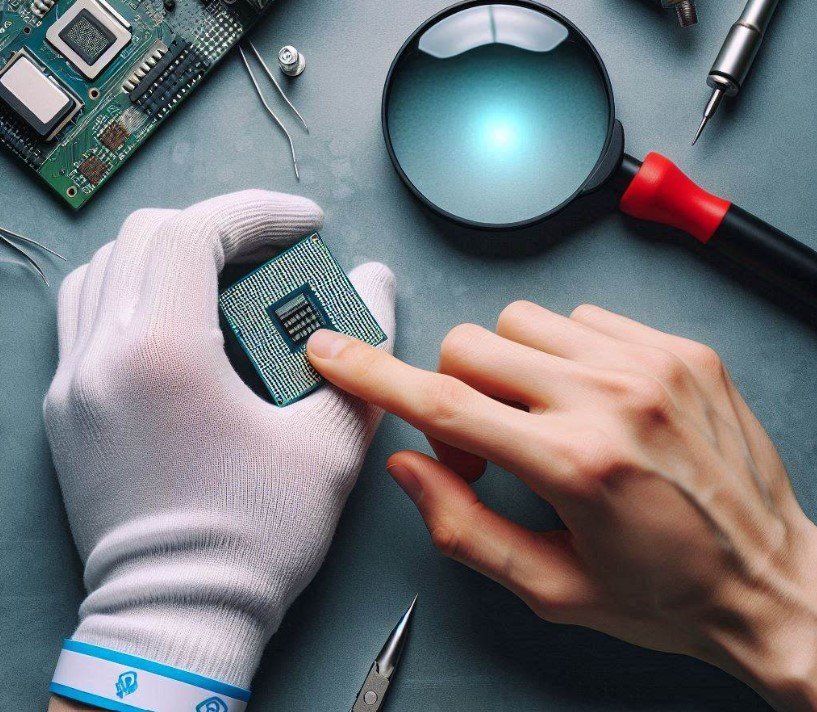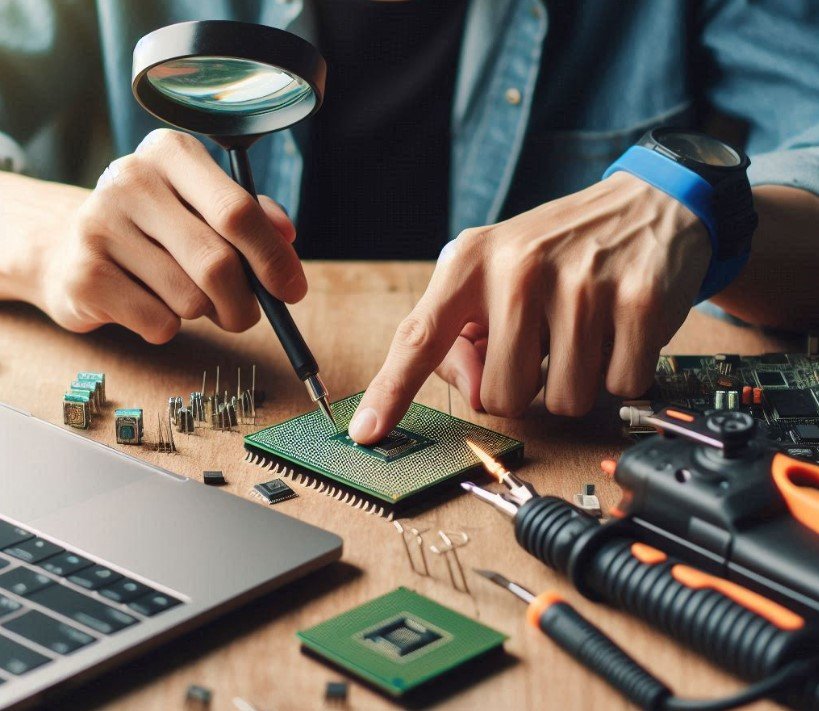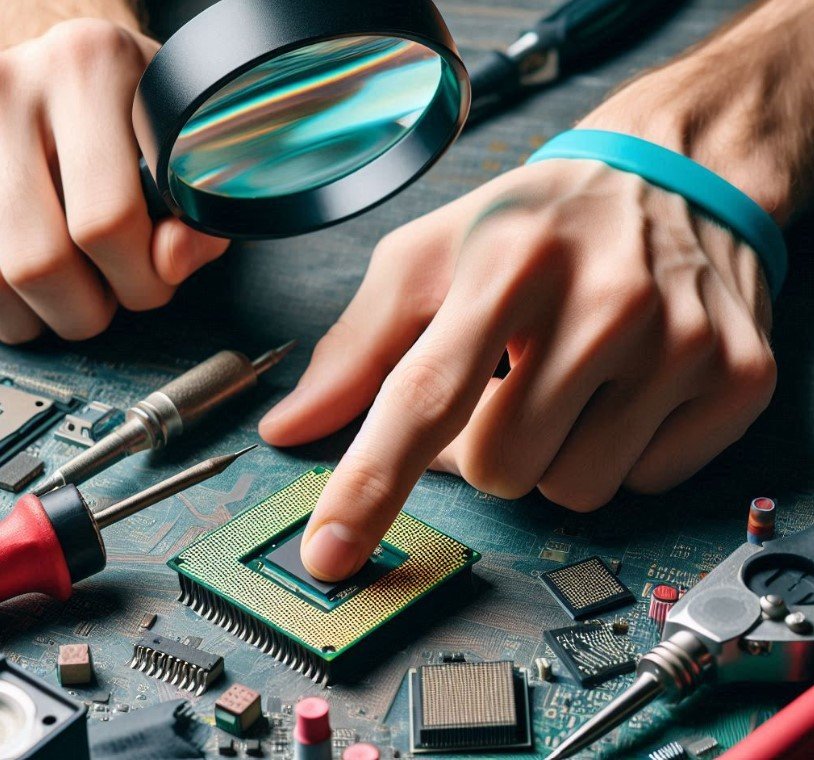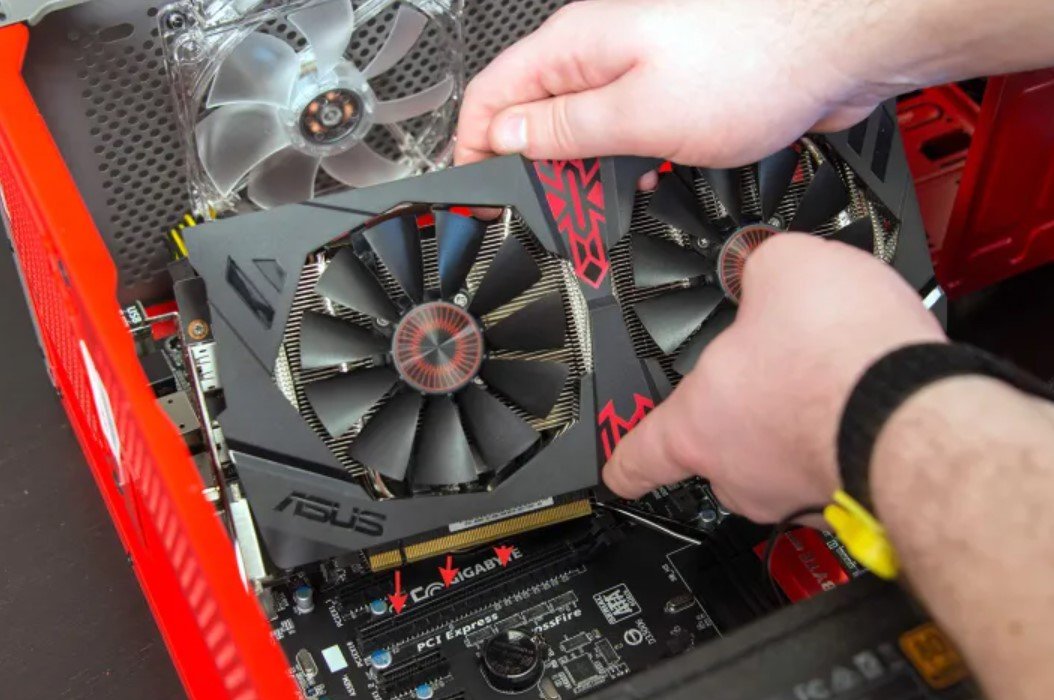In this blog post, I’ll explain Is It Safe To Touch A CPU With Your Finger? I see nothing wrong with touching the metal top with the CPU model, revision, and other information as long as you’ve recently cleansed your hands. It’s a heat spreader for the silicon underneath.
Please avoid touching the pins on the bottom of the CPU (if it’s an AMD) or the area where the motherboard pins make contact with the CPU. Read the entire article to know What Happens If You Touch Processor With Your Finger?
Is It Safe To Touch A CPU With Your Finger?
Yes, you can touch it but you should avoid touching the CPU with your fingers. The actual central processing unit is located under the die.

Can You Touch A CPU With Hands?
Touching the motherboard with your hands can be harmful for a number of important reasons:
- Discharge of static electricity: Wearing certain fabrics on dry days could make the body build up static electricity. If this static energy gets into the motherboard, it could hurt or kill the electrical parts that are there.
- Oils and moisture: Our naked palms contain natural oils and a little moisture. These may leave residues that corrode or tamper with electrical signals on the motherboard’s fragile circuits and connections.
- Contamination: When we touch the motherboard with our hands, dirt, skin cells, and other things can move to it. Over time, this dust and dirt can make it harder for heat to escape, which can cause short circuits and generally make the motherboard less reliable and effective.
To avoid these issues, it is best to handle the computer carefully and wear anti-static gloves when working on or near it. This helps keep the sensitive parts safe from getting dirty or static electricity that could damage the computer.
What Happens If I Touch CPU With Fingers?
We risk overheating our CPU. In the worst situation, static electricity poses a risk that it will carry other components with it during the process. Touch a pipe (such as the heating system) before you begin. Wash your hands with alcohol.
Wearing cotton clothing protects you from absorbing new static electricity, and touching the pipe eliminates any potential static energy from your body. Alcohol ensures your hands are free of sweat, dust, and other small particles.

Although there is little danger of harm, use caution! You assume it’s just your CPU when it occurs out of the blue. Later on, you learn that fixing it will be relatively inexpensive.
What Happens If You Touch The Little Copper Spots On The CPU?
Generally speaking, there is no big deal if the CPU’s top is briefly touched. The integrated heat spreader (IHS), located on top of the CPU, is intended to disperse heat from the device.
A quick inadvertent touch should not be harmful as long as you do not use excessive force or pressure and as long as you do not leave any dirt, oils, or other pollutants on the surface. Essential items to stay away from are:
- Putting a lot of pressure or stress on the CPU since doing so might harm some internal parts.
- It permits liquids, oils, or other materials to contact the CPU’s surface, which may impede its ability to dissipate heat.
- Frequent handling or contact with the CPU may eventually deteriorate the thermal interface material between the processor and the IHS.
The CPU should continue to operate correctly as long as the contact was brief and light and you did not detect any evident problems, such as the system overheating.
However, to maintain the CPU in top shape, it is often advisable to handle it sparingly. You can ask the CPU maker for advice or refer to your system documentation if you have more questions.
What Would Happen If I Touched The Bottom Of An Intel CPU? Will It Break?
It is possible for an Intel CPU to sustain damage if its bottom is touched. Numerous tiny, delicate pins and contacts on a CPU’s underbelly form the electrical connections to the motherboard.
Physical touch can quickly bend or fracture these pins due to their extreme fragility. Some of these pins may accidentally bend or break if you contact or press on the bottom of the CPU, rendering it useless.
When installing or removing a CPU, handling it only by its sides or top surface is preferable, avoiding any direct touch with the underneath. The CPU can readily sustain irreversible damage from improper handling.
I Accidentally Touched The Top Of My CPU: Is This Bad?
Suppose you mean to touch it while in its socket; you risk getting burned if the computer is on and running for a few minutes or longer. The same holds if a heat sink is fitted, as those can also get heated. You must be cautious if you intend to contact it before installing it.
It’s acceptable to touch the top or sides, but you should never contact the pin (or pad) side on the bottom. If your skin oils get on them, they will function as an insulator and could cause a terrible connection.

Another issue with pins is that they are easily damaged. Last, static electricity can quickly destroy a CPU; therefore, when handling one, touch a grounded object or wear a static wrist strap.
Friend Touched Pins Before Installing CPU: Is It Bad?
It is advised not to touch the pins because they are incredibly brittle and prone to breaking. Your fingers’ oils won’t hurt them in any way. You will be fined if no noticeable residue is left on the pins. You should be able to bend the pins back carefully, even if you manage to bend them.
Is It Okay To Touch The Side Panel Of My PC While It Is Running?
When your computer is operating, I advise you not to touch the interior of the CPU cabinet. You should turn off your computer before checking, installing, or removing anything from it.
You should also remove the power plug and use an anti-static wristband when handling any parts of your computer. A better option is to take off your shoes and stand on the floor while using the computer to release any static electricity that may have collected on your person.
What Happens If I Touch A Computer Fan With My Finger?
The fans on CPUs could be more powerful. The blades rotate slowly and are incredibly light in weight. It may hurt slightly or not at all if you inadvertently contact them.
You risk damaging the fan’s motor if you repeatedly touch it or interfere with its operation while it’s powered on.

Otherwise, a little. Touching it briefly to stop it from spinning won’t be a huge concern. Simply put, don’t attempt to hold it in place when it’s on.
Can A Computer Fan Chop My Fingers Off?
They are unable to cut it off. However, it might result in a small, deep cut. If it falls or slices your head off, ceiling fans won’t kill you.
Watch the myth busters video below to learn why a ceiling fan cannot do damage. However, if we replace them with a sharper blade and a more robust motor—like lawn motors—they may hurt you.
Can I Damage A CPU By Touching It Under?
I agree that touching an LGA CPU has little chance of mechanical damage, but electrostatic discharge is still a serious risk. If necessary, such as when cleaning the contacts prior to installation, ground yourself before removing the CPU.
It should work if you place one hand on the metal components of your computer casing. Additionally, avoid carrying the CPU in your bare hand at all times, as this may generate static charges.
Furthermore, dust won’t harm it, but dirt on the contacts could cause it to malfunction once installed. That should be fixed by cleaning. It should be installed in the system or ESD package or transferred between the two; make sure to leave it unpackaged.
Please don’t consider the men on YouTube tech channels as models of best practices; they have an abundance of CPUs at their disposal.
Why Shouldn’t I Touch A CPU?
Specific high-end hardware electronics components may be harmed by that, even though they pose no threat to you. One of those could be the processor. Therefore, you run the risk of hurting if you touch it with your naked hands or essentially anything that can be statically charged.

A second but less serious concern is that you can inadvertently bend a few pins or leave a greasy fingerprint on the components meant to dissipate heat from the processor core (which could cause the chip to get hotter).
Accidentally Touched One Of The Connectors On Motherboard?
Yes, if that’s all you do with them. All a button is a way to bring the two pins together. Nothing changes whether you do this with your hands or a button. It could be better, though, to have cables coming out of your PC that are connected to your motherboard.
For example, if you unintentionally touch them with something statically charged, it may discharge through them and perhaps damage your motherboard. To safeguard the contacts, solder another button—any button will do—onto those wires; it doesn’t have to be the one from your casing.
What Happens When You Touch The Back On The CPU?
It is possible that your fingers could leave oil on the CPU, which could eventually cause the connections to corrode, although this shouldn’t be an issue for as long as CPUs are useful.
Nonetheless, it’s standard procedure to hold a CPU by its sides rather than rubbing your fingers all over the bottom. When not in use, they are stored in static-free bags.
Conclusion
Here we summarize the above information about whether is it safe to touch a CPU with your finger. Many reasons exist to avoid touching a CPU. First, skin oils and residues can move to the CPU, affecting performance and heat dissipation.
Additionally, static electricity in your body might damage the CPU’s fragile electronic components. Small static discharges can damage a computer’s CPU and other sensitive parts without being felt.
Thus, an anti-static wrist strap, an anti-static mat, and holding the CPU by its edges rather than contacting the fragile pins or surface are ideal for a CPU.
Frequently Asked Questions
Can you put your hands on a CPU?
The CPU’s underbelly is more sensitive than the IHS. If a chip gets on the pins, things like moisture, grease from your fingertips, and even an uncontrolled electrical current might damage it.
What could damage a CPU?
However, physical trauma, electrical surges, overclocking, overheating, and manufacturing flaws can all cause damage. If you think your CPU may be damaged, seek expert assistance from a computer technician or contact the manufacturer’s support for more advice.






